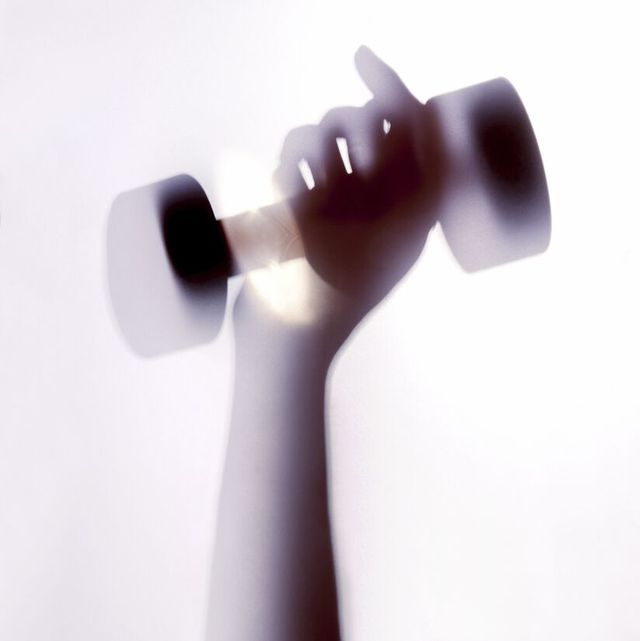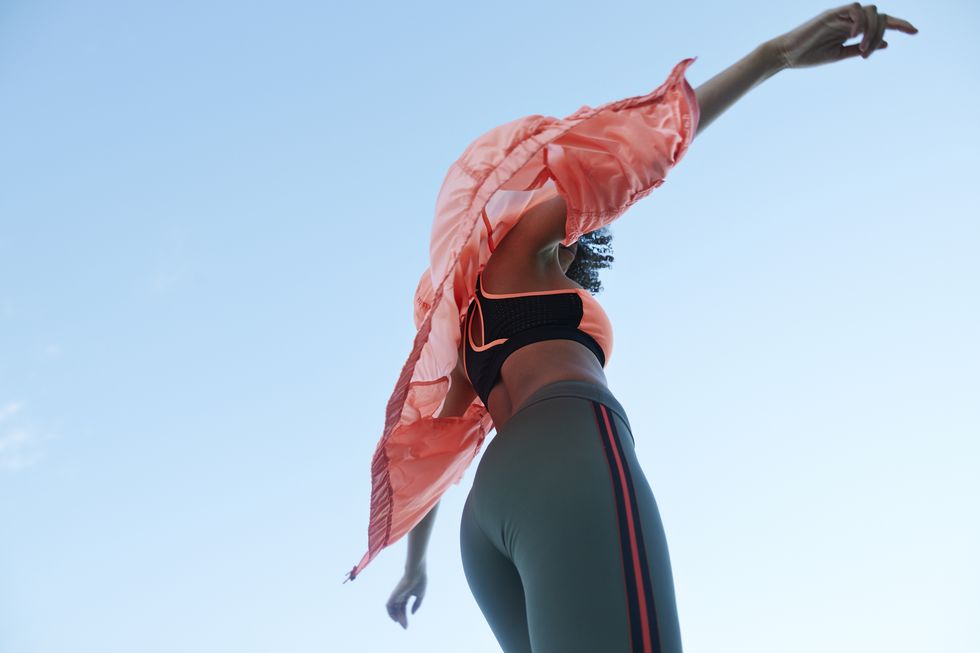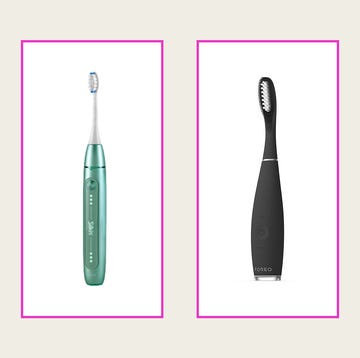The extent to which I am not (or – spoiler alert! – was not) an exercise person can hardly be overstated. I let my last gym membership lapse sometime in the Noughties. I did Ashtanga yoga for a couple of years – not coincidentally the period when Gwyneth Paltrow made it seem the path both to enlightenment and Hollywood hotness – until I quit, bendy but bored. I’ve never been a member of any kind of sports team, not even one whose main focus is the post-match drinks. I don’t climb, can barely swim and always wear the wrong shoes on hikes. I did six weeks of couch to 5k once, completed it, and, victorious, returned to the couch, which is where I stayed.
What came first? My lack of ability, or my lack of confidence? I still can’t answer that. I’m old enough that, when I was at school, PE wasn’t about building health or exploring the joy of movement. It was ‘Games’; it was about winning, and I was frozen-in-the-headlights, terrified of failing. Failure at an individual sport was at least only embarrassing; failure at team games attracted the derision and the ire of my more talented teammates, who’d somehow ended up on the losing side by grudgingly allowing me to guard the goal. I decided my best option was to not try at any of them. It wasn’t a perfect solution – I was still picked last for everything – but at least I escaped the extra humiliation of trying and failing.
So *record scratch*, how did I end up with not only a four-times-a-week workout habit, but a personal trainer, a slight obsession with Nike Metcons, and an Instagram algorithm serving me ads for protein powder and creatine?
Like most things at the moment, you can blame my transformation on the pandemic. Working from home meant that, without a two-hour commute, I had more time on my hands and, when we weren’t in full lockdown at least, I started going to the local Reformer Pilates studio a few times a week. It got me out of the house and, since you spend quite a lot of each class lying down, didn’t really feel like exercise. I liked it, but after a while I noticed what I really liked was the small but perceptible changes in my body composition: my thighs felt a bit firmer, my biceps a bit more evident.
Then, one day, I was on a government- mandated walk near my house and glanced across the road, where I saw the gym. I’d noticed it before, because the name – Pure Muscles – always made me laugh. But, on this day, I didn’t laugh, because pure muscles suddenly felt like something I might want.
I’m lucky that I’ve never truly struggled with my body image, but I can’t pretend I’ve been immune to living in a society dominated by diet culture, where the aim is only, and always, to get smaller. To one part of my brain, the idea of strength training felt challenging: to take up a form of exercise that was not explicitly or implicitly promising to make me thinner felt almost transgressive. But, for the same reason, something told me that it might be a form of healing.
Of course, I didn’t march in and join the gym on the spot. I did what any normal person would do: went home and started stalking it on social media. Through the safe distance of my phone screen, I could spy on what actually happened in there. As I suspected, it was a tangle of chrome and black machinery, racks for some unidentifiable purpose (torture?) and a lot of men with very broad shoulders. But its posts also revealed a general air of encouragement, some very pleasing exposed brickwork (the building is a former factory) and women, including one – Suzi Ross-Dickie – who was their head personal trainer. I DM-ed her.
When we met, she mentioned the words ‘progressive overload’. I nodded and smiled but, to be honest, I had no idea what I was signing up for. I just had the vague idea that it might be nice to build a bit more strength – I’d read enough articles on the subject to have absorbed the idea that maintaining your muscle mass as you get older, and it naturally starts to decline, is very much A Good Thing – but I had no real idea how that happened or what it would involve.
As it turned out, what I’d signed up for was an introduction to weightlifting of the kind that I would have found completely preposterous to imagine myself doing beforehand. Most workouts were comprised of the ‘big’ lifts (real name: compound lifts), mostly involving a barbell with weight plates on either end, that engage multiple muscle groups: squats (bar across your upper back or shoulders); chest press (lying on a bench, pushing the bar up and down); deadlifts (pulling the ‘dead’ weight of the bar up from the floor), and then some exercises that target individual muscles, often on a machine built for that purpose, or with dumbbells. Some of these I needed to build up to – even an empty barbell weighs 20kg – but it wasn’t long before I knew what the racks were for. And, as it turns out, I was right – it was torture.
But I loved it. I loved it. In a way that made me realise that all those people who rhapsodise about exercise weren’t just lying to themselves and everyone else. It made me understand why some people actively look forward to going to the gym. (Since I started, about a year ago, I have missed one – one! – planned session. Past me is wondering who I am.)
But why? First of all, let’s not mess around: it looks cool. You can keep your Stairmaster selfies in a cute matching ’fit. I like racking up weights and claiming a bench. I like heading to the shadowy free-weights section, with half an idea of what I’m doing. I feel like a bit of a badass, to be honest, even if I’m only lifting the equivalent of your granny’s shopping.
I also like that, although it’s hard, it is also... easy? The number-one thing that has prevented me from doing exercise in the past is getting out of breath. I loathe that heart-racing, gasping feeling. I know that, for many people, it’s the point, but to me it feels like an insistent reminder of my own physical inadequacy, because fit people don’t get out of breath. With weights, that’s not something you really worry about. You do your set (usually eight to 12 reps; sometimes as many as 15, sometimes just one or two if you’re working at your absolute maximum) and then you have a rest. After your break, you go again.
You get a bit sweaty, you breathe heavily, your heart rate goes up, but you don’t find yourself a panting mess, knowing you’ve got 45 minutes of the same thing still to come. And you discover that you can do pretty much anything eight to 12 times, if you put your mind to it.
But the best thing about lifting weights is that failure isn’t something to be scared of; it’s the whole point. That, it turns out, is what ‘progressive overload’ means: to get the benefit of strength training, you need to push your muscles to the point of near-failure, or outright failure-failure, every time you do it. That way, they experience the damage – microscopic tears in the muscles fibres – that causes your body to build back stronger. There is no shame in failing a lift, in the way there might be in missing a penalty, because it means you’re at your limit, which is exactly where you should be.
The truly addictive thing, though, is the way your limit shifts. Five kilos one week is 10 the next; you add another plate one day to see if you can lift it, and you can. Progress is inevitable and undeniable. And you always want more.
I’m making it sound simple, but there’s no doubt that making the leap into the weights section, or a dedicated lifting gym, can be scary. I wouldn’t have been able to do it without Suzi (I had two sessions a week with her for six months; I still see her once a week, and message her for reminders about how various machines work near-constantly – she’s very patient). Having a personal trainer is an immense privilege, of course, but if you’re interested in weights and can afford even one or two sessions, it will be a great help. If not, there are endless online resources. But it’s worth making that leap, because, once you do it, you discover some fairly universal truths: most people in the gym are nice, or at least indifferent to what you’re doing; it’s not as intimidating as it looks from the outside.
Weightlifting has changed my body in a way I didn’t actually think was possible. ‘It’s not about the aesthetics,’ Suzi and I say to each other, ‘but...’ My thighs are solid, my bum is rounder. At the age of 44, I’ve entered my crop-top era. And it is about the aesthetics, but the reason we laugh when we say it is because it’s also not. You can’t get this kind of confidence from punishing yourself, from always wanting to be less, but only from wanting to be more. After a few decades of occupying the same space like polite-but-distant flatmates, I ask things of my body now and it responds, to my amazement and delight. It’s a conversation we’ve never had before.
For optimum progression, once you’ve stressed your muscles you need sleep, protein and sufficient calories to rebuild them. In other words, you need to rest, to nourish yourself and to eat. Self-care is built into a serious programme. And the sign of your success is that you get bigger. Not big. There’s a joke that avoiding weightlifting in case you get ‘bulky’ is like avoiding driving lessons in case you turn into a Formula 1 champion: it doesn’t happen by accident. But you’re not going to look fragile and vulnerable if you weight train. You’ll look like you’re ready to stare down a culture that has told you weakness is supposed to be appealing, as it’s hard to feel anything but proud of every millimetre of muscle gained when you know how hard you’ve worked for it.
For people with overactive, anxious minds (my people), I can’t think of anything better to do. Partly because when you’re trying to lift your bodyweight or more from the floor, there’s no room in your head for a single thought beyond how incredibly hard it is. But also if you want a reminder that you are strong, and capable, and growing all the time, there’s nothing like going into a gym and proving it to yourself several times a week.
And I like feeling part of the sorority of women who lift, from the women in my gym who casually smash out my personal bests as their warm-ups to the ones I follow on social media, and even this month’s cover star Adele, whose reported max deadlift of 160lb (72.5kg) is my current goal. (And has been all year.) They seem confident and determined, and willing to try hard things. I’m trying to be more like them.
Sometimes it does feel silly. I think about my ancestors, who probably preserved their muscle mass through noble, dignified activities like blacksmithing or scything, and wonder what I’m doing in a room dedicated to moving specially manufactured pieces of metal around.
But I’m in the gym one Friday lunchtime when, checking my phone between sets, I read the news that Roe v Wade has been struck down. I have tears in my eyes as I lie back on the bench, dumbbell in each hand, and start counting out the next reps. The dramatic irony seems a bit heavy-handed as I work to strengthen my body while, halfway around the world, other women are losing the right to determine what happens to theirs. It’s hard not to think about power and control, and what it means to be in charge of your own self. While I think about that, I’m moving metal through space; it’s heavy, but it’s happening. One, two, three, four. I’m in my body, I can feel my muscles moving: doing what I ask of them, doing what they can. Five, six, seven, eight. I might feel sad and angry, but I know I won’t fail this set because I don’t feel weak at all. Nine, ten, eleven, twelve.
I sit up, wipe my eyes, take a break. Just a short one. Soon, we’ll go again.














